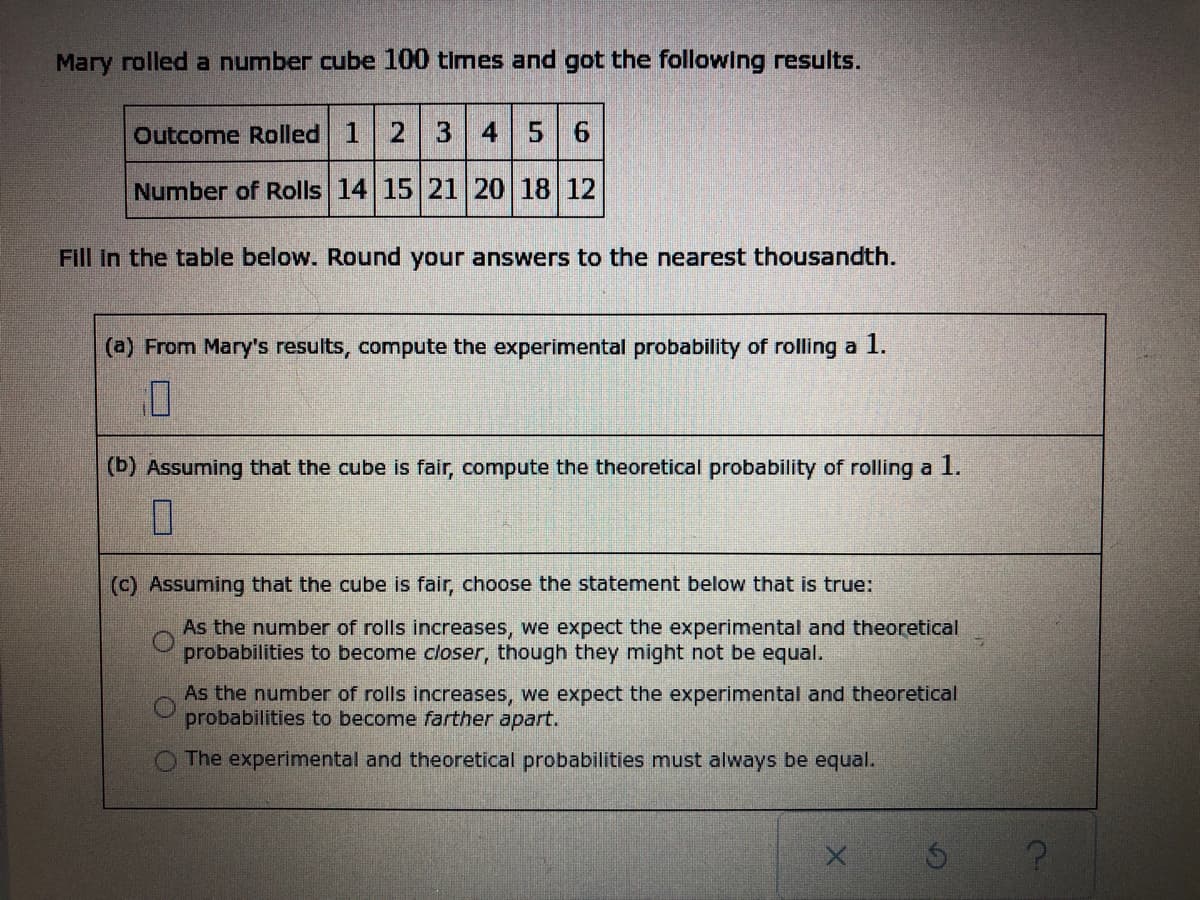Mary rolled a number cube 100 times and got the following results. Outcome Rolled 1 2 3 4 5 6 Number of Rolls 14 15 21 20 18 12 Fill in the table below. Round your answers to the nearest thousandth. (a) From Mary's results, compute the experimental probability of rolling a 1. 10 (b) Assuming that the cube is fair, compute the theoretical probability of rolling a 1. 7 (c) Assuming that the cube is fair, choose the statement below that is true: As the number of rolls increases, we expect the experimental and theoretical probabilities to become closer, though they might not be equal. As the number of rolls increases, we expect the experimental and theoretical probabilities to become farther apart. The experimental and theoretical probabilities must always be equal.
Mary rolled a number cube 100 times and got the following results. Outcome Rolled 1 2 3 4 5 6 Number of Rolls 14 15 21 20 18 12 Fill in the table below. Round your answers to the nearest thousandth. (a) From Mary's results, compute the experimental probability of rolling a 1. 10 (b) Assuming that the cube is fair, compute the theoretical probability of rolling a 1. 7 (c) Assuming that the cube is fair, choose the statement below that is true: As the number of rolls increases, we expect the experimental and theoretical probabilities to become closer, though they might not be equal. As the number of rolls increases, we expect the experimental and theoretical probabilities to become farther apart. The experimental and theoretical probabilities must always be equal.
Chapter8: Sequences, Series,and Probability
Section8.7: Probability
Problem 50E: Flexible Work Hours In a recent survey, people were asked whether they would prefer to work flexible...
Related questions
Question

Transcribed Image Text:Mary rolled a number cube 100 times and got the following results.
Outcome Rolled 1 2 3 4 5 6
Number of Rolls 14 15 21 20 18 12
Fill in the table below. Round your answers to the nearest thousandth.
(a) From Mary's results, compute the experimental probability of rolling a
7
(b) Assuming that the cube is fair, compute the theoretical probability of rolling a 1.
0
(c) Assuming that the cube is fair, choose the statement below that is true:
As the number of rolls increases, we expect the experimental and theoretical
probabilities to become closer, though they might not be equal.
As the number of rolls increases, we expect the experimental and theoretical
probabilities to become farther apart.
The experimental and theoretical probabilities must always be equal.
X
?
Expert Solution
This question has been solved!
Explore an expertly crafted, step-by-step solution for a thorough understanding of key concepts.
This is a popular solution!
Trending now
This is a popular solution!
Step by step
Solved in 2 steps with 2 images

Recommended textbooks for you

